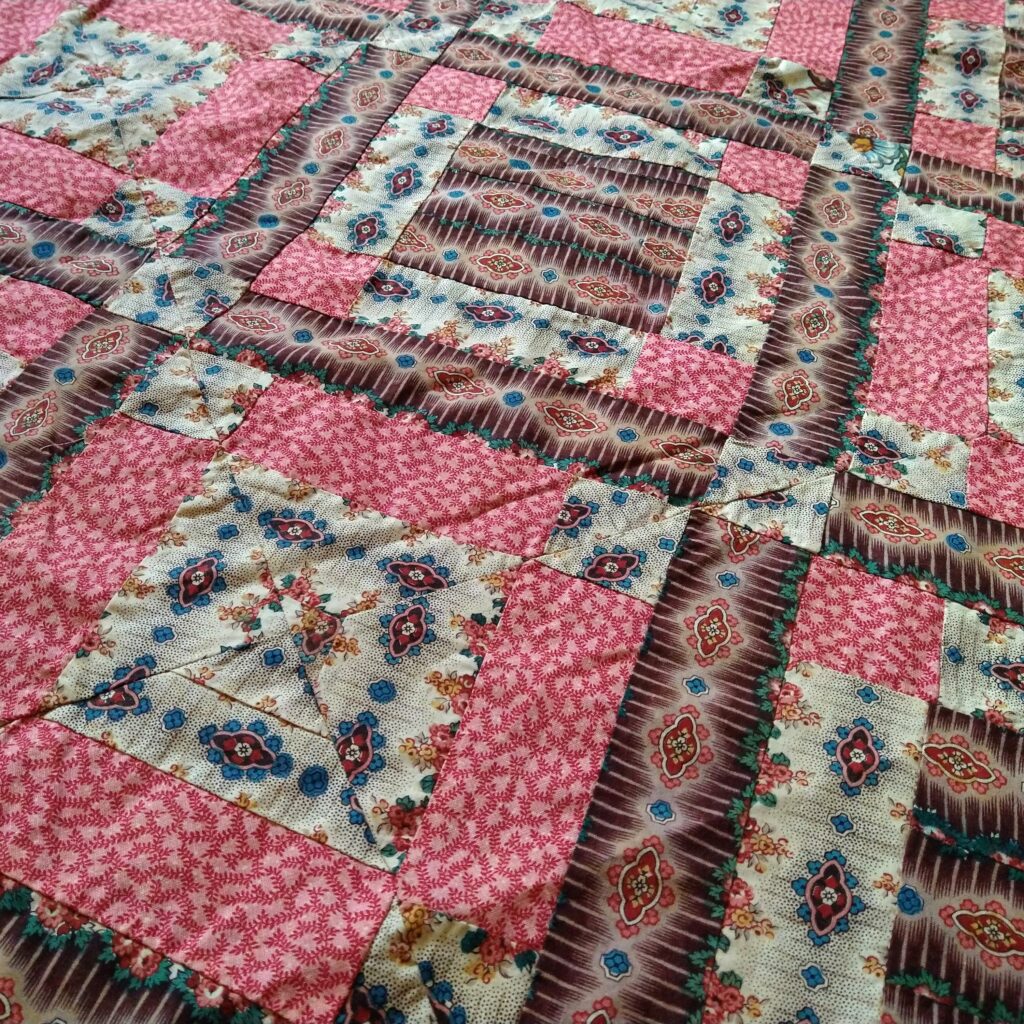Here I will share stories about my current projects/classes, and of course share some quilt history snippets! Be sure to sign up for my email newsletter so I can let you know when the new blog comes out!
explore
welcome to The
SNQ Blog!
History
FMQ
Art QUilts
Classes
Email Newsletter
Although numerous technological developments altered the course of quilt history, the sewing machine is likely the most recognized given its longstanding and visible influence on quilters. First used commercially in 1830 and domestically in 1856, the sewing machine’s history is as complex as it is critical. The machine’s invention is often attributed to Elias Howe due to his unique combination of previous mechanical developments; however, with further analysis, it is clear the machine’s story is one of incremental development and shared responsibility rather than the genius of a single inventor.
The sewing machine, birthed during the Industrial Revolution, marks notable changes beyond textile-related crafts like quilting. For example, the installment plans and trade-in policy developed by Isaac Singer’s partner, Edward Clark, have become standard marketing practices in various industries. Singer’s installment plans additionally advanced the machine’s diffusion as economically unattainable machines became affordable.
The introduction of the sewing machine was not without complications. Along with perfecting the machine mechanically, through marketing, companies combatted fears that women were incapable of handling machinery and that they would “go wild” when faced with free time previously spent on laborious hand-sewing. These marketing efforts aided the machine’s expansion and subsequently its influence on quilting which has continued into the present era.
The sewing machine, although difficult to learn seems to have stimulated rather than discouraged the creativity and ingenuity of the 19th-century quilter. Many experimented with combinations of hand and machine work to achieve the greatest efficiency and workmanship. For example, a quilt might have hand-pieced blocks that are machine assembled, allowing the quilter to sew in small pieces away from her machine yet increasing her efficiency in the longer, more tedious areas. Similarly, a quilt might be hand quilted in the center, the area most difficult to wrestle into the machine’s throat, but the border machine quilted, a task the sewing machine was not even intended for.
Despite this ingenuity, it is important to note the general decline in workmanship at the end of the century, also attributed to the sewing machine which limited the need to learn fine hand workmanship. This is the same period when the machine’s popularity began to decrease as it became a more common household item and thus not a significant source of pride. Although many continued to use the machine for their hidden piecework, visible machine stitching was replaced by a growing sense of nostalgia towards pre-industrialization values and activities. This decline in the sewing machine’s popularity, coupled with the general deterioration of hand-sewing skills, resulted in the limited quality among quilts from the turn of the century, specifically seen through the birth of the tied quilt.

